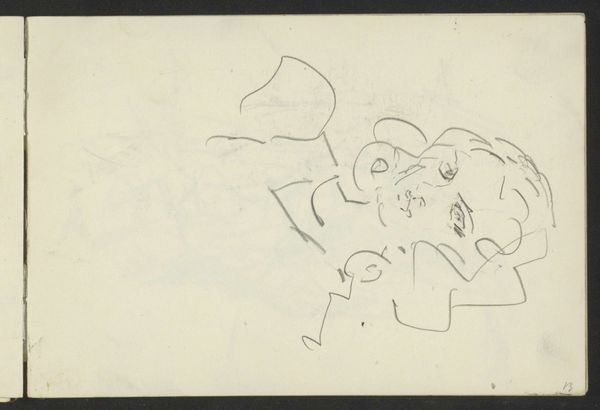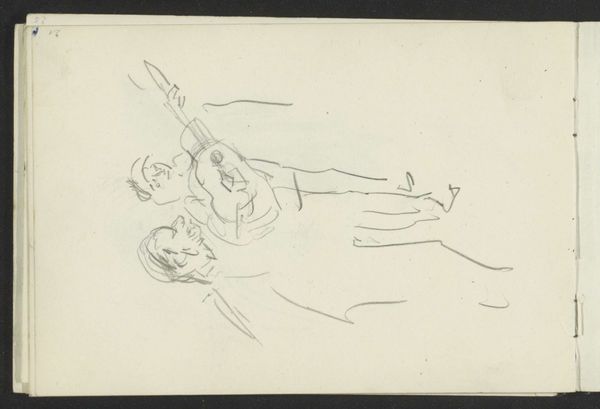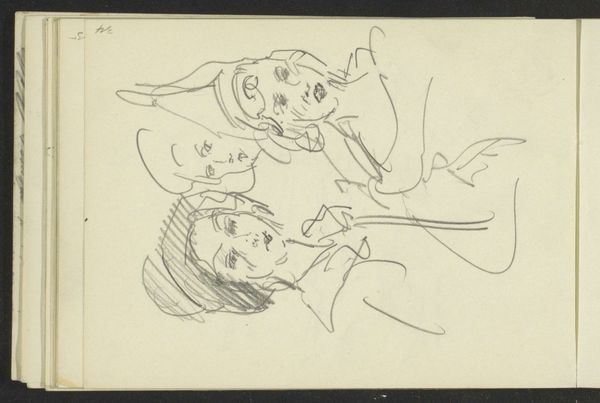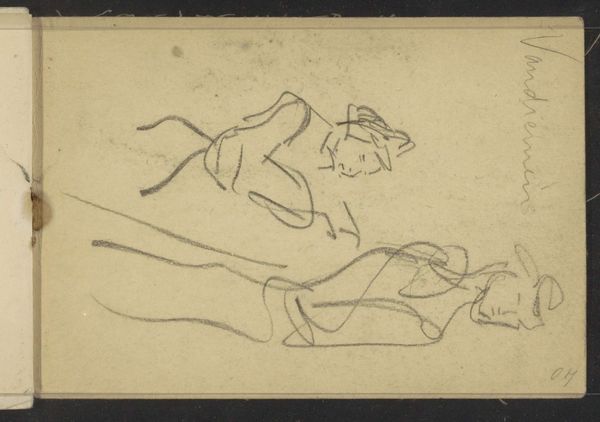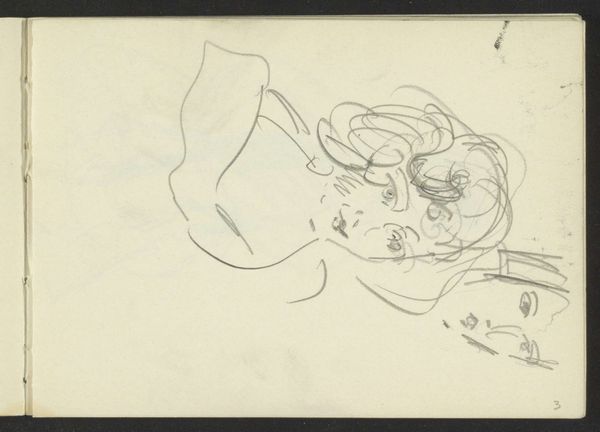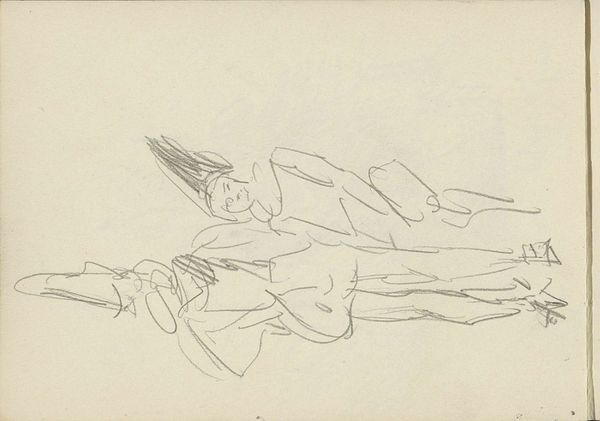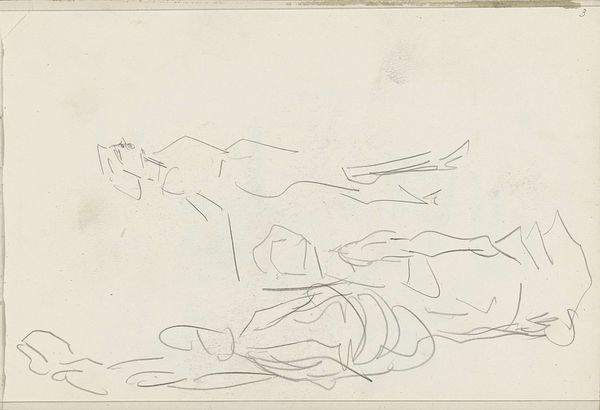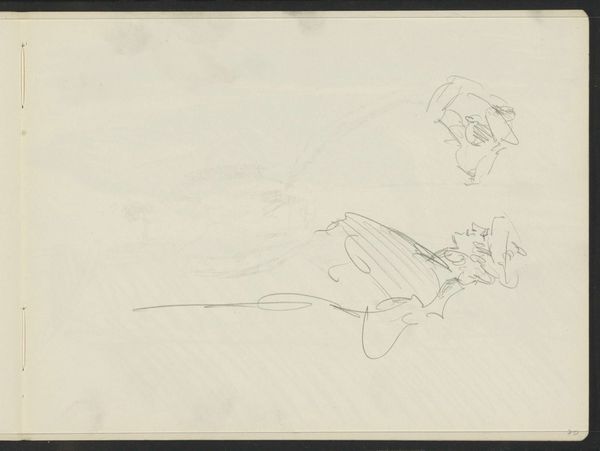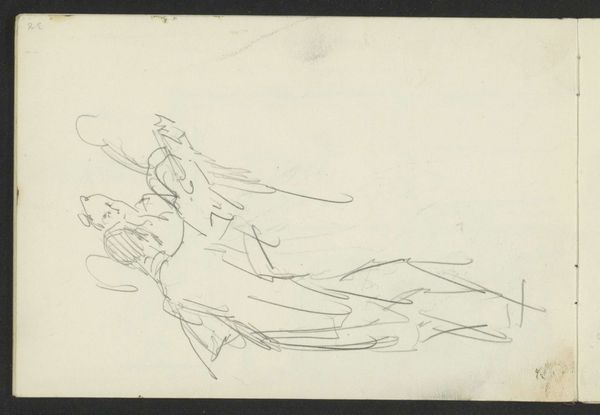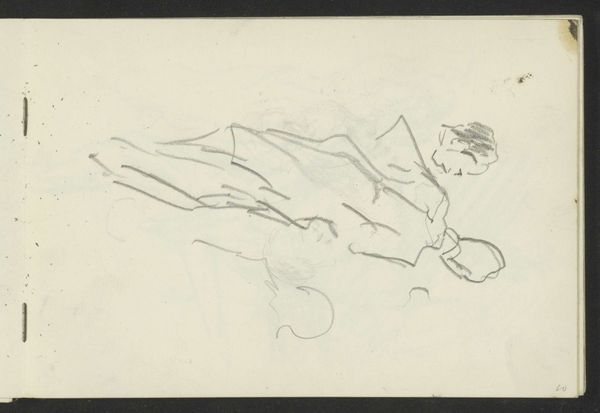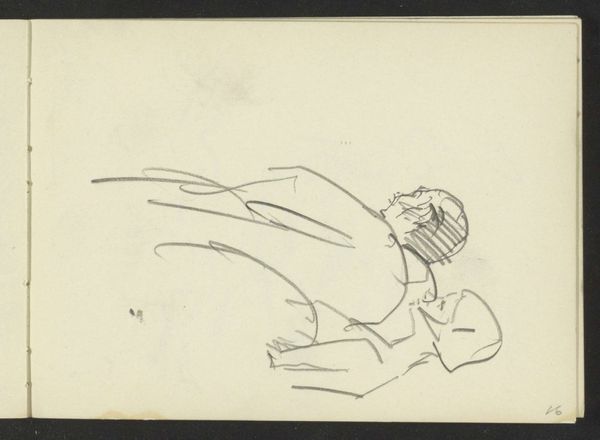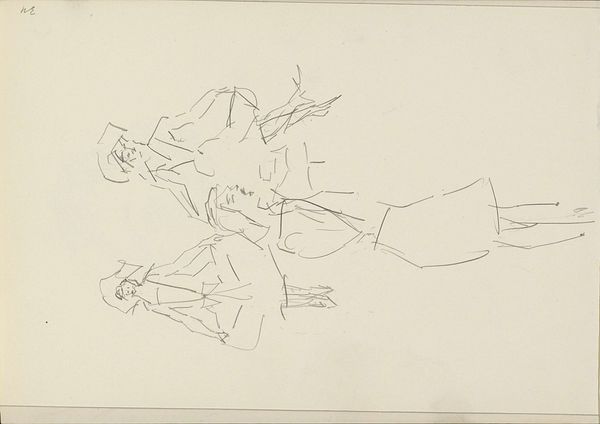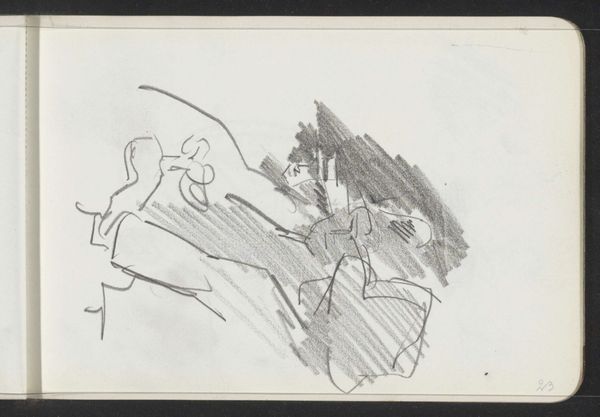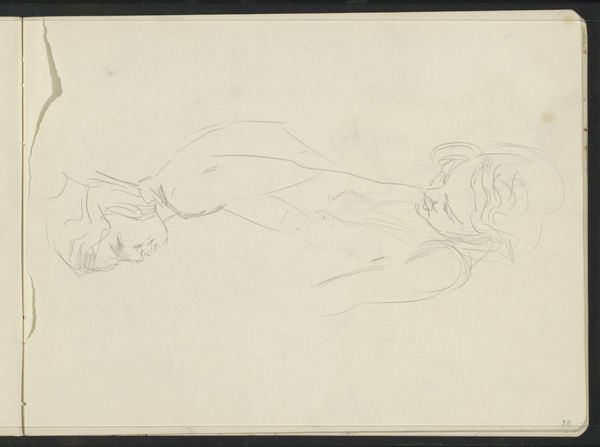
Copyright: Rijks Museum: Open Domain
Curator: Here we have "Three Women in Costume, Possibly Variety Dancers" by Isaac Israels. It's a pencil drawing, believed to have been made sometime between 1875 and 1934 and it resides here in the Rijksmuseum. Editor: Oh, this drawing. It feels so ephemeral, like capturing a dream slipping away. There's something both elegant and slightly melancholy about it. Curator: Elegant and melancholy… I love that description. The impressionistic style really emphasizes that fleeting, momentary feel, doesn't it? The suggestion of movement, the faces slightly blurred… Editor: Absolutely. Look at how Israels used the pencil strokes. They create the costumes, sure, but they also hint at the weight of performance. Are those tired eyes, or the bright sheen of the stage? Perhaps both, entangled, a kind of mask they're wearing even off-stage. The hats feel especially weighty to me. Curator: It’s interesting you say mask, because I’m drawn to the hats too. Notice how the angles differ? Are they indicators of personality, reflections of their stage characters seeping into their personal lives? These could very well be allusions to particular stage characters. Or is the asymmetry about showing multiple, fragmented sides of these individuals at once, so each character contains the parts of all three women? Editor: Yes, fragmentation is definitely key here. I keep thinking about the "Three Graces" of classical art, but with a distinct modern twist, infused with the realities of women working, performing. This reframes how the “three graces” may be perceived—instead of celebrating the natural grace of womanhood, perhaps it honors the performative aspects of the three faces of entertainment. Curator: I like the connection with The Graces! There is a timelessness suggested within those simple strokes, along with the sense of daily routines. Perhaps each grace can embrace a bit of humdrum. Editor: Indeed! I feel the artist gives the dancers a quiet dignity, capturing a story in each face. And this encourages us to make sense of that quiet story together. Curator: Definitely. Israels gifts us this snapshot of a time long ago, and that's what art should do. And leaves us to connect to our own interpretations of the "Three Graces". Thanks for the musings. Editor: My pleasure! It's always an adventure seeing through your insightful eyes.
Comments
No comments
Be the first to comment and join the conversation on the ultimate creative platform.
